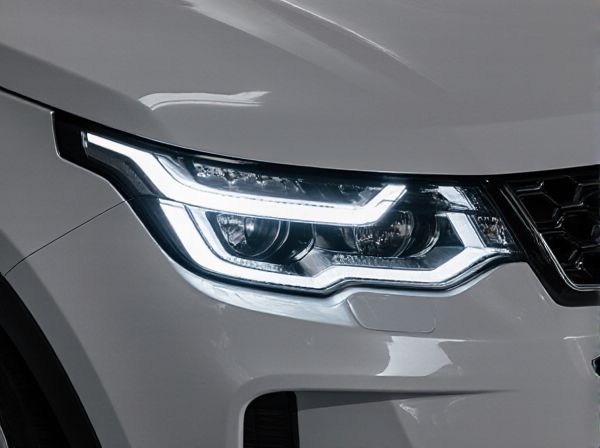
Photo illustration: Cornering Light vs Static Bending Light
Cornering light enhances your visibility during turns by activating additional beams that illuminate the direction you're steering, improving safety on winding roads and tight corners. Static bending light, however, provides fixed illumination in a specific direction to brighten dark areas without adjusting dynamically to steering input. Choosing between cornering light and static bending light depends on your driving environment and preference for adaptive or steady supplemental lighting.
Table of Comparison
| Feature | Cornering Light | Static Bending Light |
|---|---|---|
| Function | Illuminates direction when turning | Enhances visibility on curves without steering input |
| Activation | Triggered by turn signal or steering angle | Activated by vehicle speed and steering angle |
| Light Type | Separate bulb or LED module | Adaptive main headlight beam |
| Coverage Area | Wide side illumination near front wheels | Curved beam arc following road bends |
| Purpose | Improves safety during low-speed turns | Enhances visibility on winding roads at various speeds |
| Typical Use | Urban driving and parking maneuvers | Highway and country roads |
Introduction to Automotive Adaptive Lighting
Cornering light enhances nighttime visibility by activating additional lights that illuminate the direction of the turn based on steering angle or speed sensors. Static bending light remains fixed but provides a wider beam pattern to light up road curves ahead without dynamically adjusting to steering input. Both technologies are key components of automotive adaptive lighting systems designed to improve driver safety by optimizing illumination during turns and curves.
What is Cornering Light?
Cornering light is an automotive lighting feature designed to enhance visibility during low-speed turns by illuminating the direction in which the vehicle is steering. It activates automatically when the steering wheel is turned or the turn signal is engaged, casting light towards the side of the vehicle to reveal pedestrians, obstacles, or road edges. This illumination differs from static bending lights, which typically provide a fixed beam angle without adapting to steering input.
How Does Static Bending Light Work?
Static bending light enhances nighttime visibility by projecting a fixed, angled beam that illuminates the roadside curves without requiring the vehicle to turn its wheels. This lighting system uses sensors to detect steering inputs and vehicle speed, activating dedicated LEDs or bulbs that cast light toward the inside of the bend. By improving illumination in corners, static bending lights reduce the risk of accidents on winding roads and increase driver confidence during nighttime driving.
Key Differences Between Cornering Light and Static Bending Light
Cornering lights activate dynamically to illuminate the vehicle's turning path by swiveling or projecting light in the direction of the steering angle, enhancing visibility during tight turns or curves. Static bending lights, however, provide fixed illumination that extends the beam pattern sideways but do not move with the steering, improving visibility on corners without adaptive motion. The primary difference lies in cornering lights' active adjustment with steering input versus static bending lights' passive, fixed-angle illumination.
Benefits of Cornering Lights for Night Driving
Cornering lights enhance night driving safety by illuminating the direction of steering, improving visibility around curves and intersections better than static bending lights, which only provide a fixed beam pattern. By adapting to the vehicle's movement, cornering lights reduce blind spots and help drivers detect pedestrians, cyclists, and obstacles earlier, minimizing collision risks. This dynamic lighting technology offers a significant advantage in low-light conditions, especially on winding roads and in urban environments with complex lighting situations.
Advantages of Static Bending Light in Urban Areas
Static bending lights enhance visibility by illuminating curves as the vehicle turns, improving safety in urban areas with frequent sharp bends and narrow streets. These lights provide consistent, focused lighting without requiring vehicle speed adjustments, ensuring pedestrians and cyclists are clearly seen. The steady illumination helps reduce accidents in densely populated environments by offering better awareness of corners and obstacles.
Safety Impact: Cornering vs. Static Bending Light
Cornering lights enhance safety by illuminating the vehicle's path in the direction of the turn, improving visibility around curves and reducing the risk of accidents in low-light conditions. Static bending lights provide a fixed illumination angle, which offers limited visibility enhancement during turns compared to dynamic cornering lights. Vehicles equipped with cornering lights deliver superior safety performance by allowing drivers to detect obstacles and pedestrians earlier when navigating bends.
Technology Behind Adaptive Headlights
Cornering light technology uses sensors and steering input data to activate additional lights that illuminate curves dynamically, enhancing visibility during turns. Static bending lights rely on fixed-position bulbs angled to project light along the road's curvature without real-time adjustment. Adaptive headlights integrate advanced electronics, combining inputs from steering angle, vehicle speed, and yaw rate sensors to adjust beam patterns for optimal illumination, improving nighttime driving safety.
Popular Cars Equipped With Cornering or Bending Lights
Popular cars equipped with cornering lights include the BMW 7 Series, Audi A6, and Mercedes-Benz E-Class, which enhance visibility by illuminating the direction of the turn. Static bending lights, found in models like the Subaru Outback, Toyota Camry, and Volkswagen Passat, provide stationary illumination along the curve of the road without relying on steering input. Both systems improve night driving safety, but cornering lights offer dynamic lighting linked to steering angle, while static bending lights activate based on vehicle speed and angle sensors.
Choosing the Right Lighting System for Your Vehicle
Cornering light systems activate additional illumination in the direction of the turn, enhancing visibility around curves and improving safety during low-speed maneuvers. Static bending lights, integrated into the headlamp assembly, provide a fixed beam that remains angled in the direction of steering input, offering consistent light coverage when cornering. Choose cornering lights if you prioritize dynamic lighting response and improved night driving visibility, while static bending lights are suitable for steady, focused illumination in bends without the complexity of moving parts.
 caratoz.com
caratoz.com